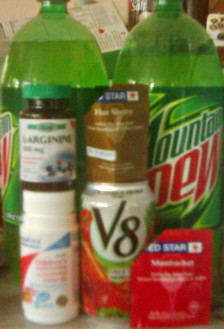Did I mention the place I work has some amazingly spiffy perks for a nerd like me?
Last night, I was poking around pubmed looking for references to yeast and erythritol (namely, do yeast interact with it, and will they metabolize it?) I found precisely one relevant reference. From 1975. In a Czechoslavokian microbiology journal. A no-longer-existent Czechoslovakian microbiology journal. Even though it was a journal published in English, I didn’t figure I’d be able to find the article I was looking for. It did turn out that the greedy (insert long string of profanity here) anti-open-access “SpringerLink®” Netherlands organization has an electronic copy of the article…which I can get limited access to for a short time for a mere $34.00. Not going to happen, obviously.
Just in case the college had a subscription that would let me get to the article at no extra cost, I checked. No such luck. But…
…The campus medical science library just two buildings over from where I work has dead-tree editions of essentially the entire journal! Im name des Nudelmonster! Instead of paying $34.00, I got a photocopy of the article for about $0.50. Bonus: As I had hoped, the article[1] reports that erythritol is not metabolized by yeasts, although it is taken up to a small extent. That means I can add erythritol (or xylitol or sorbitol or whatever) to must or wort, and it’ll still be there when the yeast finish, leaving the resulting beverage still sweet. Hooray!
Plus, I was also able to get access to an electronic copy of a review of the uses of poly-?-glutamate[2], which I was bemoaning not having access to over on an interesting Small Things Considered post recently.
Speaking of reading, one thing I really could use are any worthwhile books on the general subject of applied/industrial microbiology, bioprocess engineering, fermentation, and so on. “Worthwhile” here means practical texts that are A)primarily about microbiological processes (as opposed to, say, bioengineering of plants) B)Reasonably technical, and C)Either “not very old” or “very old indeed” (I collect old science books).
I’m not a fan of Amazon.com’s abuses of the patent system, but I’m in a hurry since it’s past my bedtime already. Therefore, purely as a sampling of the kinds of books that sounded interesting to me, here is a selection in more or less random order of books that came up in a quick search on amazon.com. Anybody out there have any other suggestions?






 To your right, you should see the ingredients used in this project. Yes, those two bottles in the background are there on purpose. I’m trying to make…Mountain Dew® Wine.
To your right, you should see the ingredients used in this project. Yes, those two bottles in the background are there on purpose. I’m trying to make…Mountain Dew® Wine.